Canon Powershot 600: It belongs in a museum
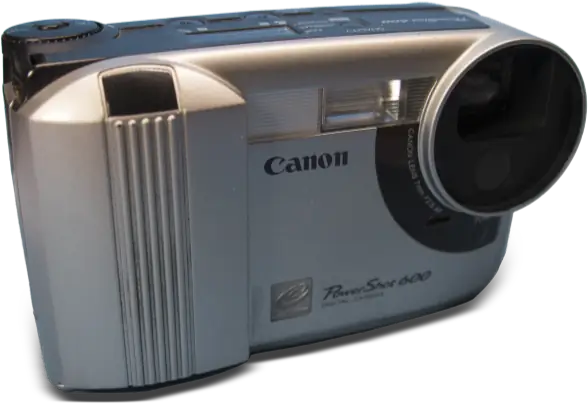 I managed to acquire this Canon Powershot 600 on Wallapop for a very good price. Apparently, it was Canon's very first digital camera, released way back in 1996.
I managed to acquire this Canon Powershot 600 on Wallapop for a very good price. Apparently, it was Canon's very first digital camera, released way back in 1996.It was listed as non-functional because the seller no longer had the charger and couldn't tell if it still worked. I decided to take a chance and bought it.
I’m getting increasingly frustrated by something that keeps happening. Shortly after buying it, the seller – who had probably done some internet research in the meantime – messaged me saying he made a mistake with the price. He asked if I’d be interested in taking it for 100 euros, claiming it was one of the first digital cameras Canon ever made and had historical value and stuff like that…
Obviously, my answer was no. I wouldn’t have bought it at that price even if it had been certified working.
Then he offered it for 50 euros, but my answer remained the same.
As I wrote in the previous post, these old cameras aren’t going to last much longer, so I’m not willing to spend a fortune on them.
In the end, he decided to let me have it at the original price of 10 euros, so that worked out well.
Here it is in all its glory. To honor it, I made a little stop motion video. Why? No particular reason, I just felt like it.
Aesthetically, it’s really imposing – a real brick! It’s even bigger than my DSLR (a Canon EOS 600D).
Like the PowerShot 350, this one also has very few functions, and as you saw in the video, it doesn’t have a screen, just an optical viewfinder. So, no way to review your shots right after taking them.
I wouldn’t be surprised if almost everyone back then just pointed and shot with auto exposure. The manual mentions the possibility of exposure compensation, but it must have been really difficult to do without a light meter or a screen.
Of course, with a bit of experience, you can guess how much to compensate the exposure. For example, if I’m shooting against the light and I don’t want my subjects to be completely black, I definitely need to increase the stops.
Another really interesting feature, especially for the time and for a consumer camera, is the ability to save images in RAW format. This format allows you to get the image exactly as it’s produced by the sensor, without any subsequent processing by the camera and without compression.
I wonder if software for manipulating RAW files already existed in 1996. Apparently, the Photoshop version at the time (4.0) didn’t support it.
It’s a real shame that Canon disabled this feature in later models, but luckily it can be reactivated with third-party firmware like CHDK (only for models with a Digic processor).
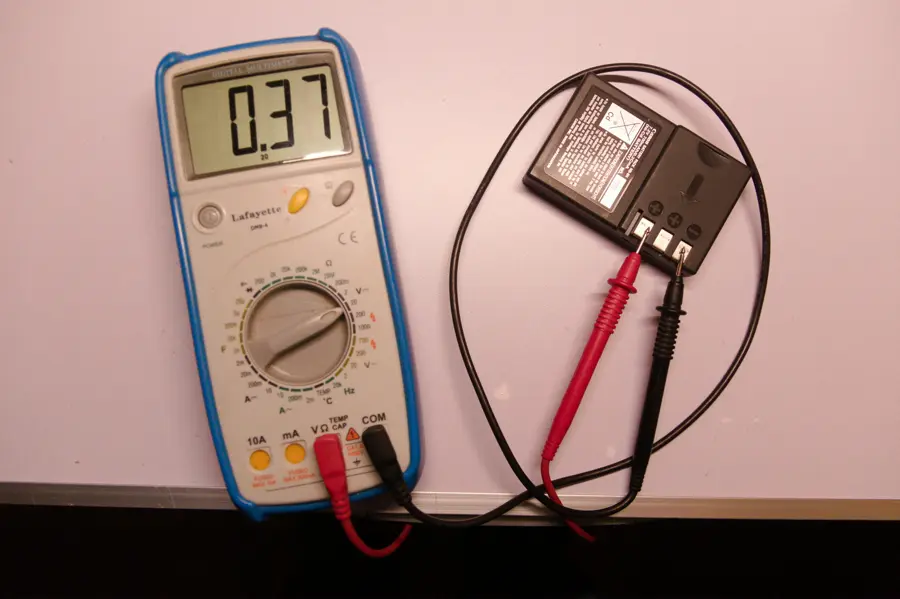 I started testing it, and of course, it didn't turn on.
I started testing it, and of course, it didn't turn on.I took out the battery, and the voltmeter read 0.37 volts: completely dead!
Let’s try some experiments. I’ll preface this by saying I’ve never tried charging a battery this way before: I’m going to try using a bench power supply, which in my case is a very useful little module I bought from AliExpress.
I set it to the battery’s nominal voltage and let’s see if it starts charging.
Unfortunately, the power supply shows zero Amps of current draw. So, I try setting it to 1 Volt higher and see if anything changes.

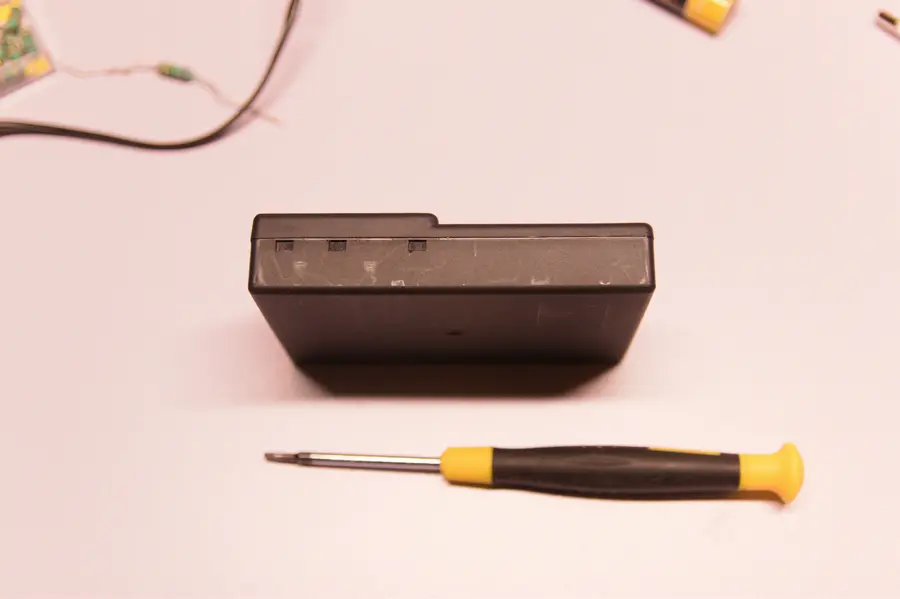 No dice. It seems completely dead to me.
No dice. It seems completely dead to me.It doesn't look particularly difficult to open, so I grab a flat-head screwdriver and try to take it apart.
There it is, open, and as I suspected, all the cells have leaked a lot of acid.
I’ve decided to stop here with the battery for now. I can try to recover it later if the camera works.
First, I try connecting a universal power adapter set to 10.5 volts, but nothing happens. Maybe that input is only for charging the battery.
At this point, I try to turn it on by connecting the power supply directly to the terminals, instead of the battery.
I manage to rig something up by connecting two alligator clips, one to the negative terminal and another to one of the two positive terminals. Since there are two positive terminals, I use a pair of pliers to bridge them together, being very careful not to create any short circuits. I realize it’s a really precarious situation, but it’s only temporary.
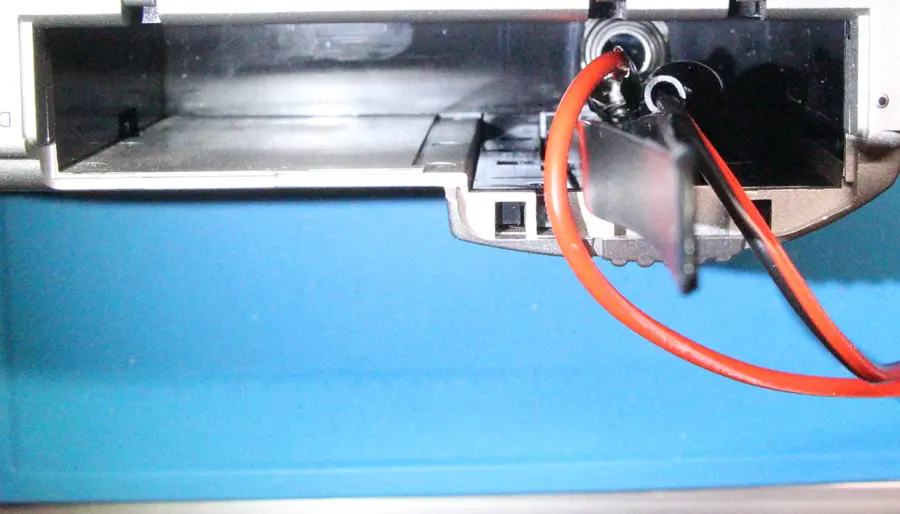 I couldn't get a better photo than this.
I couldn't get a better photo than this.I set the power supply to 7.2 volts and try. Nothing happens. Zero current draw. Could the camera itself be completely dead?
Looking closer, I notice there’s a switch underneath that’s activated by closing the battery compartment. Unfortunately, I can’t close it, so with a screwdriver balanced between the camera and my leg, I try to turn it on again. The situation is getting increasingly precarious!
Forgive me, but I couldn’t take a picture in these conditions.
This time I finally get a result, even though the message on the display says “LB”, meaning “low battery”.
Very strange, considering the power supply is set to the same voltage as the battery and supports a maximum current of 4 A.
I try increasing the voltage a bit, but the result doesn’t change.
In the end, I reach 10.5 volts (and I won’t go beyond that because I’m afraid of frying it), and finally, the camera turns on!
I try the buttons a bit, and they seem to work perfectly.
With a bit of excitement, all that’s left is to take some photos.
And this is unfortunately what I get.
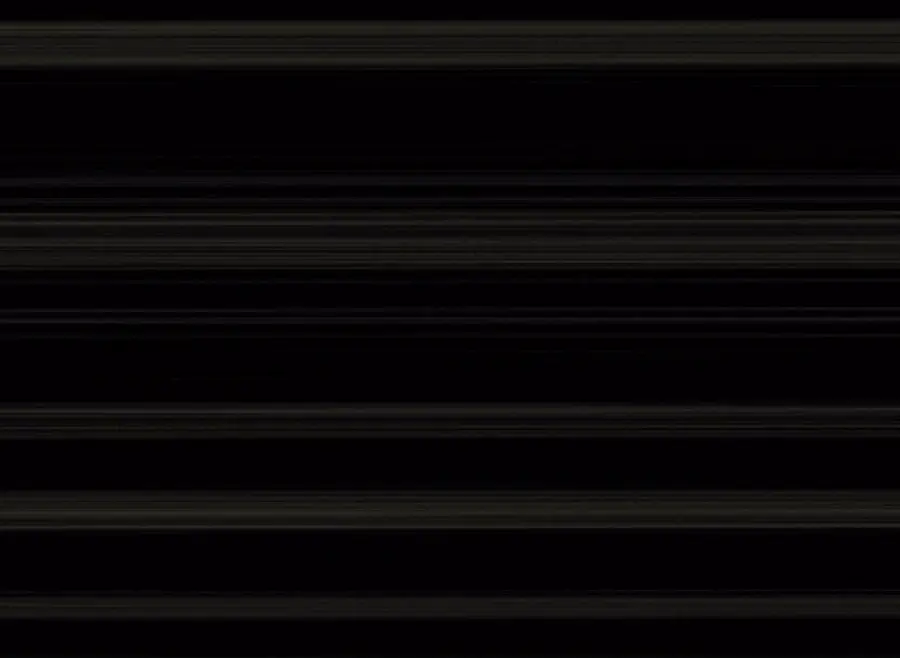
Excluding the shutter, which is working correctly, in my experience, this only means one thing: dead sensor.
Did I destroy it by powering it at 10.5 volts, or was it already broken?
I’ll forever remain with this doubt.
At this point, I still want to get to the sensor and see if I can find a replacement online (I doubt it’ll be easy).
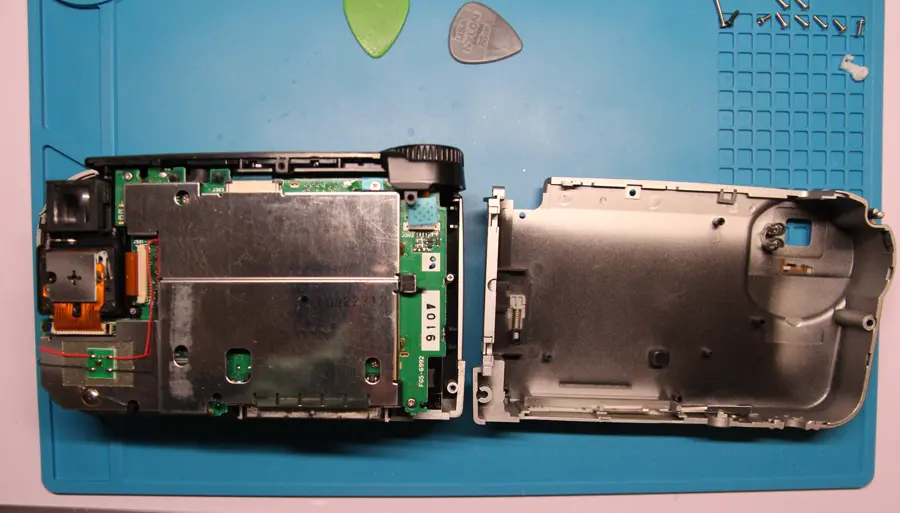
The sensor is obviously behind the lens, on the left, and it seems easily accessible – just remove a few screws and detach the ribbon cable.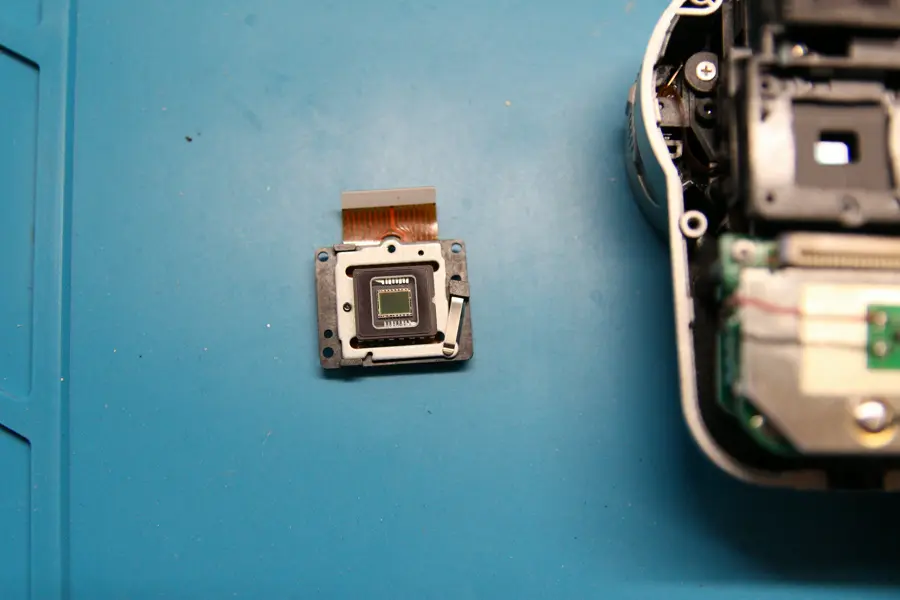
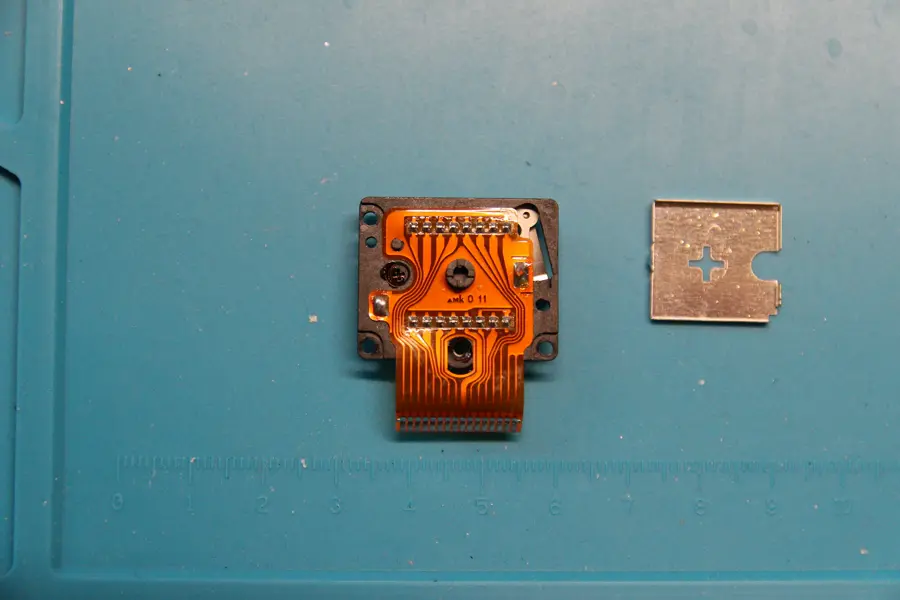 With the soldering iron, I desolder the metal shield to reach the pins more easily.
With the soldering iron, I desolder the metal shield to reach the pins more easily.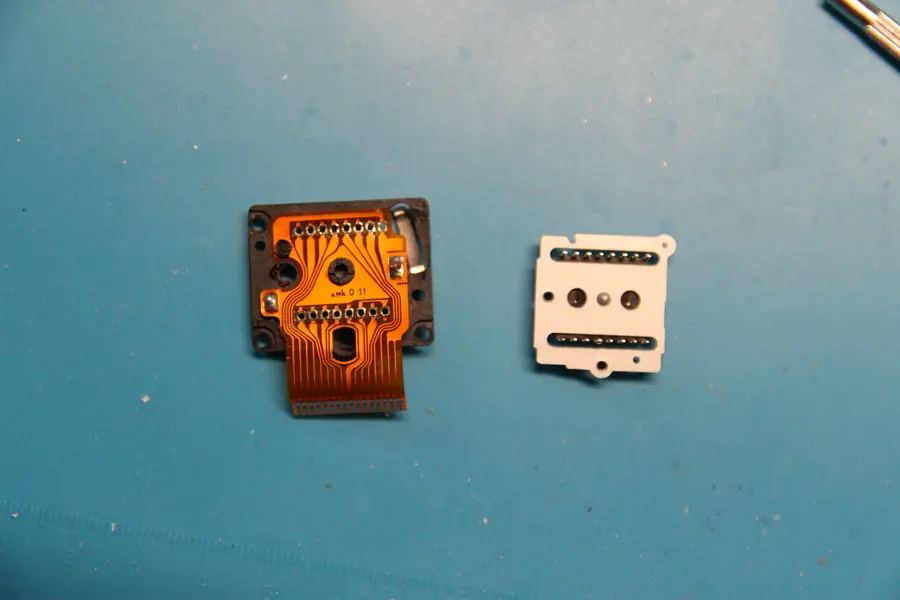 I'm in too deep now, so with desoldering braid, I desolder all the pins.
I'm in too deep now, so with desoldering braid, I desolder all the pins.I want to see if there's a code on the back of the sensor itself. Desoldering successful.
The back of the sensor is attached to the metal plate. I manage to detach it fairly easily anyway.
Unfortunately, there’s nothing written on the back of the sensor.
The only visible code is on the sides: on one side it says “Japan” and on the other side, I think it says “3FCX 7 Z2”.

Obviously, there’s absolutely nothing to be found about it online. Spare parts for this camera are impossible to find. There are CCD sensors in DIP16 format on Aliexpress, but looking at the datasheet, they don’t seem compatible, as this sensor has 570k pixels, and the ones I found have a different pixel count.
My adventure with this camera ends here. I came so close to the finish line, but due to circumstances beyond my control, I can’t go any further.
What a shame!
It has been submitted and will be reviewed before being published.